A little sip of Uji-cha:
Matcha’s history in the region and Mizuba Tea Co.

The lush, Camellia sinensis laden hills that constitute Japan’s famed Uji region are found at the very center and heart of the country. Uji-cha has made a name for itself, made rich by history and of course, flavor. In March, 2013, I was lucky enough to step off the Shinkansen (bullet train) on a whim - and found myself in and city that’s - forgive me - steeped in tea lore and legend.
Uji. The city thrives around the Ujigawa: a large, burbling river that proudly cuts through town. Not only does it proffer beautiful views (peeks into the the back valley and hills; a fiery red pagoda set against lush greenery, a few more graceful bridges), but the Ujigawa is the center of Uji’s community. Parts of the famed Tale of Genji take place on its iconic bridges, it sustains Uji’s unique cormorant fishing, it provides ample scenic locations for people to gather, stroll, picnic, or lounge…and provides water for tea, plant to cup.
As Uji’s streets began to materialize I was struck by the presence of Uji’s hallmark: the scent of fresh, powdered Matcha that hit me and overtook our senses. The aroma was undeniable, and I grew giddier and giddier as I learned that almost every shop was dedicated to tea. From the cha-soba noodles in one window, to the mounds of sweet Matcha mochi in another; to the yunomi cups piled high among kyusus of every design…never mind the Matcha soft serve ice cream that capped the end of the road, sprinkled liberally with such pristine, vibrant Matcha. No one had to convince me if I liked this place. My companion had a cone…and 15 minutes later (without saying a word to me) ran back half a mile before the shop closed to order a second.

Where were we, that proffered tea at every turn? How did Uji come to be? At the beginning of the 13th century in the days of the ruling shoguns, two Buddhist monks, Saicho and Kukai, brought tea plants back from China. However, it wasn’t until the later Kamukura period (1191 AD) that the famed Rinzai Zen priest Eisai encouraged the growth and production of tea. Legend has it that Eisai gave seeds to another Zen priest, Myoe Shonin. Shonin originally began cultivating tea in Toganoo, but searched for better growing environs and found Uji. News of Uji’s legendary tea spread across Japan, and Uji’s fame as the best tea-growing region was set in history. Uji Matcha, in particular, became known as the pearl of Japanese green tea.
The shade-growing method that gives Matcha its tender, nutritious, and vibrant qualities began in the 16th century, but later in 1738, Soen Nagatani (also credited with inventing Japan’s famous Sencha tea), devised a specialized method of processing harvested leaves. Instead of roasting and drying the harvest, he found steaming tea preserved freshness and enhanced a fuller flavor. The technique became known as the Uji method, and is still standard practice today. One can even visit Soen Nagatani’s shrine deep in the hills of the Uji countryside, with walls carved with the names of Japan’s most famous tea houses and proprietors.
Before I knew how famous the region was for its quality, and before the idea of Mizuba even came to be, I was inspired by the small, close-knit community where I tasted Matcha for the first time. I was blessed to meet an enthusiastic Matcha producer, in charge of his family’s 100-year-old farm (“very young,” he says). It wasn’t long after that I felt called to build a company grounded in the traditions and spirited relationships I encountered over cups of tea. Now, Mizuba is honored to exclusively source all of our Matcha from Uji, and visit annually for harvest season.

Our facility in the Uji countryside houses 50 heavy stone mills, which run twice a day and spin at 30 revolutions per minute. Though Uji is a famed region, our production is relatively small in comparison, (two of our grades are harvested once a year) allowing for our team to focus fully on the quality of each batch of our Matcha tea. When selecting the best Tencha (shaded leaves, before being stone-ground) to make Matcha, our producer notes that it’s not so much the shape that he’s looking for, unlike many leaves for tea. “Shape has no meaning. It’s the color and flavor that’s most important. It’s difficult to show flavor in words.” We agree – quality tea is sometimes an ineffable beauty, perhaps best taken as a simple experience.
So what exactly makes Uji matcha superior in quality? There are many geographical, historical, and cultural elements that contribute to Uji matcha as the queen of all matcha. Here are a few important facts:
1) Uji as a region benefits from ideal climate and conditions for growing tea. Laying in the heart of two river basins, the Uji & Kizu, surrounded by mountainous and hilly terrain, creates "river fog" and mountain mist which has been known to be perfect for creating an umami-filled tea.
2) Uji is the historical home of matcha, meaning that there is a wealth of ancestral knowledge for tea producers to learn from. Matcha production first began in the 13th century, and the title, "Uji-cha" first appeared in the 14th century.
3) Shade-producing, essential for the production of matcha, was invented in Uji in the 16th century. There was much innovation in this region that allowed Uji to foster Japanese culture in its own right (apart from Chinese tea culture of the Song dynasty).
4) Uji tea production was protected and encouraged in the Edo period by the Japanese Shogunate, meaning that only a select few were able to practice making tencha. The method was not allowed outside Uji, and was maintained until the 19th century.
As such, Mizuba hopes to impart just a taste of the larger, beautiful experience of Uji to you. Your cup of Matcha contains years worth of craft and care, and with each sip you take, you help continue to make Uji’s history as vibrant as the color of Matcha itself.

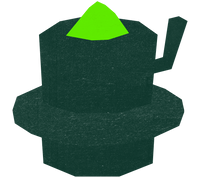

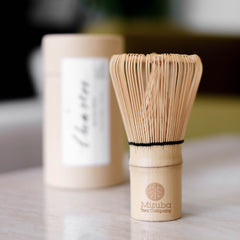
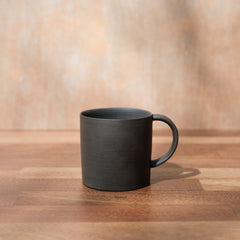
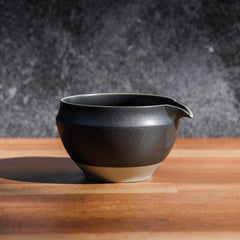
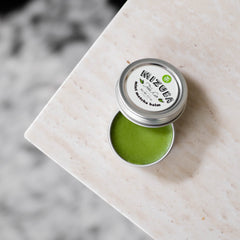
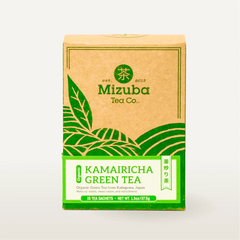

Leave a comment